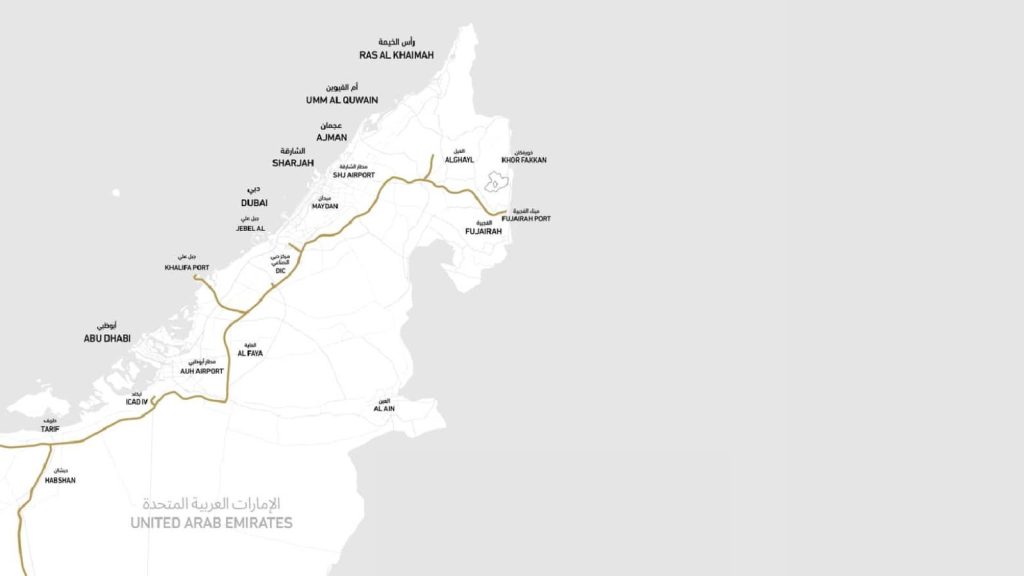The Etihad Rail project in the United Arab Emirates (UAE) aims to connect all seven emirates through a 900-kilometer rail network, with the goal of achieving high-speed travel capabilities up to 217 miles per hour. This ambitious initiative includes the commencing of construction on stations in Sakamkam and Fujairah, as well as the delivery of bridge infrastructure across the route, which is set to link all emirates once completed. The project aims to reduce commuting times, with a detailed map indicating stops at key locations across the UAE, from Al Sila in the West to Fujairah Port on the East coast. One notable segment is the(pregnationalized route from Abu Dhabi to Al Ruwais, which is expected to take approximately one hour and 40 minutes. Other major stops include Abu Dhabi to Fujairah, with an annual passenger volume projected to reach 36 million by 2030. Each train is expected to carry a capacity of around 400 passengers, highlighting comprehensive planning and infrastructure upgrades.
Understandably, the project has a significant impact across the UAE’s economy and culture, particularly for major hubs like Dubai and Abu Dhabi. Reduced commuting times can lead to improvements in travel time, enhancing the quality of life for residents and visitors while strengthening economic ties. The UAE’s provisions include new reinforced bridge infrastructure, designed to withstand the heat of high-speed trains traveling at over 200 miles per hour, ensuring smooth and controlled travel. These details in the official launch statements reinforce the project’s commitment to sustainable development and future investment in key sectors.
Etihad Rail’s announcement has garnered attention from the public and industry stakeholders, with a press release detailing the project’s goals and vision for a more efficient transportation network. Press notices emphasize the benefits of the project, including a 30-40% reduction in commuting times, which could free up time slots for other activities. These initiatives demonstrate Etihad Rail’s dedication to driving shared prosperity and improving connectivity for the UAE’s citizens. Additionally, the company has outlined plans to leverage high-speed rail to enhance business growth, unlock emerging investment opportunities, and contribute to sustainable development for generations to come.
As the project progresses, the Dubai to Abu Dhabi and other segments are set to open within the next decade. The most anticipated section, the Dubai to Abu Dhabi route, is set to be completed in 2027, while the rest of the network will continue construction over the course of the next decade. The UAE government is Folderlizing the project as a strategic step to modernize its transportation network, positioning the region as a leader in high-speed rail. Press releases and public notices highlight the project’s significance, signaling a period of transformation for the UAE’s transportation landscape. With continued support and investment, the Etihad Rail project could become a cornerstone of UAE’s revitalization, offering a path to improved connectivity and economic stability.
Ultimately, the Etihad Rail project is more than just a transportation marvel; it is a reinvention of the UAE’s cities and regions, eager to embrace a more connected and prosperous future. As the project is revealed in detail, the public can stay informed through press notices and public messaging, ensuring that the benefits of this ambitious initiative resonate with stakeholders at all levels.










